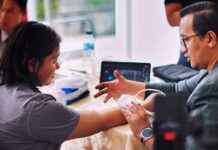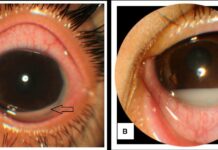- Choir singing is a superspreader of COVID-19, according to reports
- Compared to speaking, singing produces a greater number of aerosols and water droplets
- Research published in the journal, Clinical Infectious Diseases, has found singing increases the chances of infection, especially in group settings
A superspreader is an individual or an event that infects more people with a disease than usual. Current evidence suggests COVID-19 mainly spreads via respiratory droplets and close contact with infected individuals.
Infectious droplets are released when a person speaks, coughs, sneezes or sings. It has the ability to infect an individual standing within 1-2 meters of an infected person. Additionally, aerosol droplets are also a source of disease transmission. Certain medical and dental procedures generate aerosols.
Aerosol transmission has played a key role in outbreaks that have occurred in closed settings involving people talking or singing.
52 People Infected by Superspreader at Choir Practice
On March 10, 2020, 122 people sung together for 2.5 hours while sitting 6-10 inches apart in a large multipurpose room. Only one person at the practice reported having flu-like symptoms on that day.
According to a report by the CDC, 52 people from the group ended up getting COVID-19, while two people lost their lives. Singing contributed to the spread of infection through the emission of aerosols.
In many countries such as Germany and the Netherlands, group singing activities have been banned. In the USA alone, singing events have accounted for over 500 cases.
Study Finds Singing Generates Aerosols
Researchers at the University of New South Wales (UNSW) have conducted a study to show how singing might be a COVID-19 superspreader.
Using an image-based flow diagnostic system, they visualized the emission of aerosols and droplets during singing. A high-speed video was made of the person singing a major scale. The participant also coughed and, counted from 1 to 10 for the study.
Certain notes such as “do”, and “fa” generated more aerosols. Moreover, 75% of the droplets followed an ambient airflow pattern. Thus, pointing towards the possibility of airborne spread of COVID-19 during singing.
Therefore, researchers suggest proper safety guidelines for public singing events to avoid the spread of COVID-19 as well as, other similar respiratory infections.
Additionally, all future choir practices should be held in well-ventilated or outdoor settings to minimize the spread of disease.
In conclusion, it is important to further investigate factors such as pitch, rhythm, diction, etc. to have a better understanding of aerosol generation during singing.
References:
Prateek Bahl, Charitha de Silva, Shovon Bhattacharjee, Haley Stone, Con Doolan, Abrar Ahmad Chughtai, C Raina MacIntyre, Droplets and Aerosols generated by singing and the risk of COVID-19 for choirs, Clinical Infectious Diseases, ciaa1241, https://doi.org/10.1093/cid/ciaa1241
Hamner L, Dubbel P, Capron I, et al. High SARS-CoV-2 Attack Rate Following Exposure at a Choir Practice — Skagit County, Washington, March 2020. MMWR Morb Mortal Wkly Rep 2020;69:606–610. DOI: http://dx.doi.org/10.15585/mmwr.mm6919e6external icon




